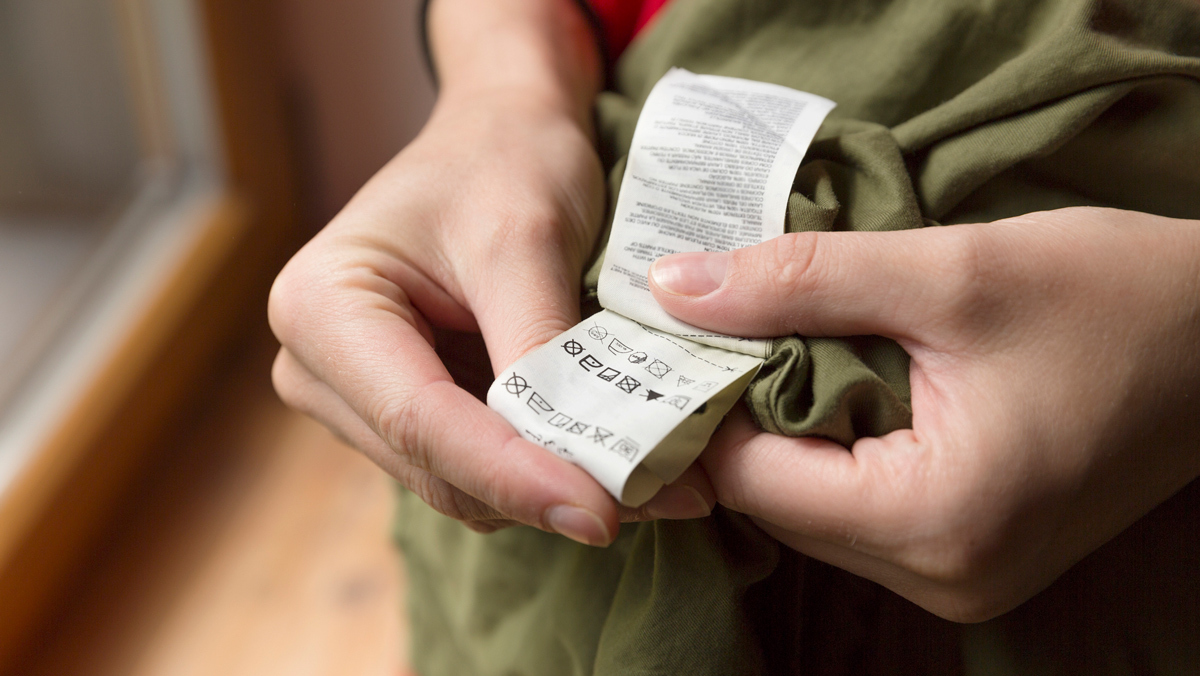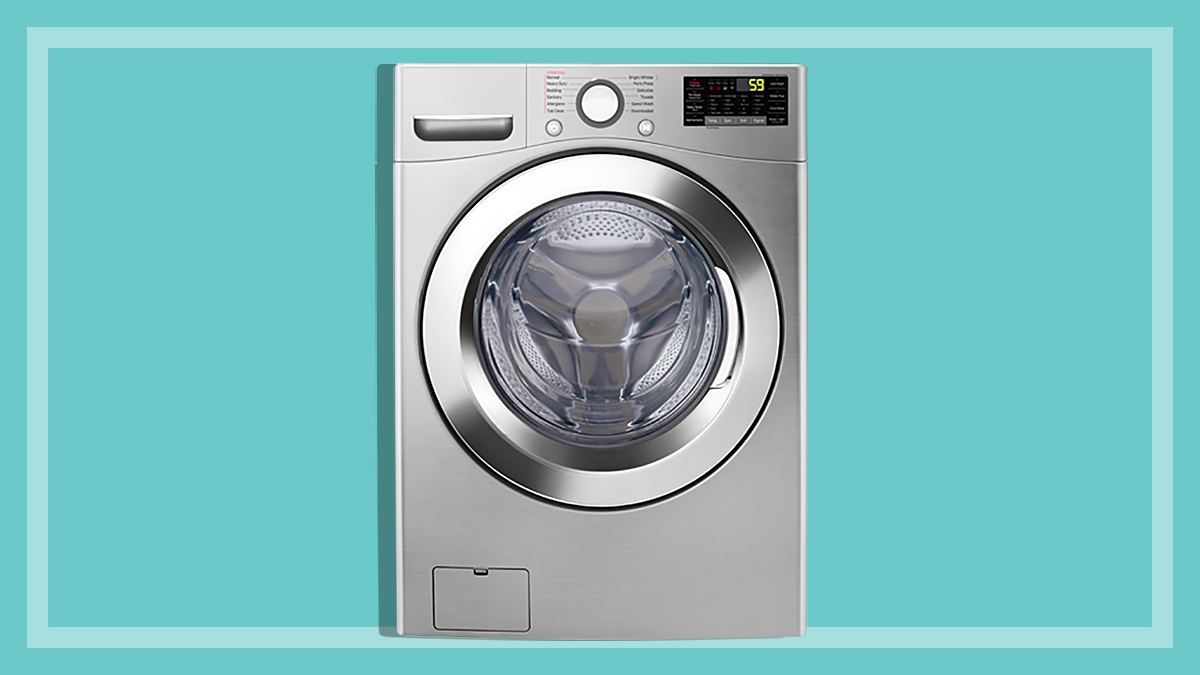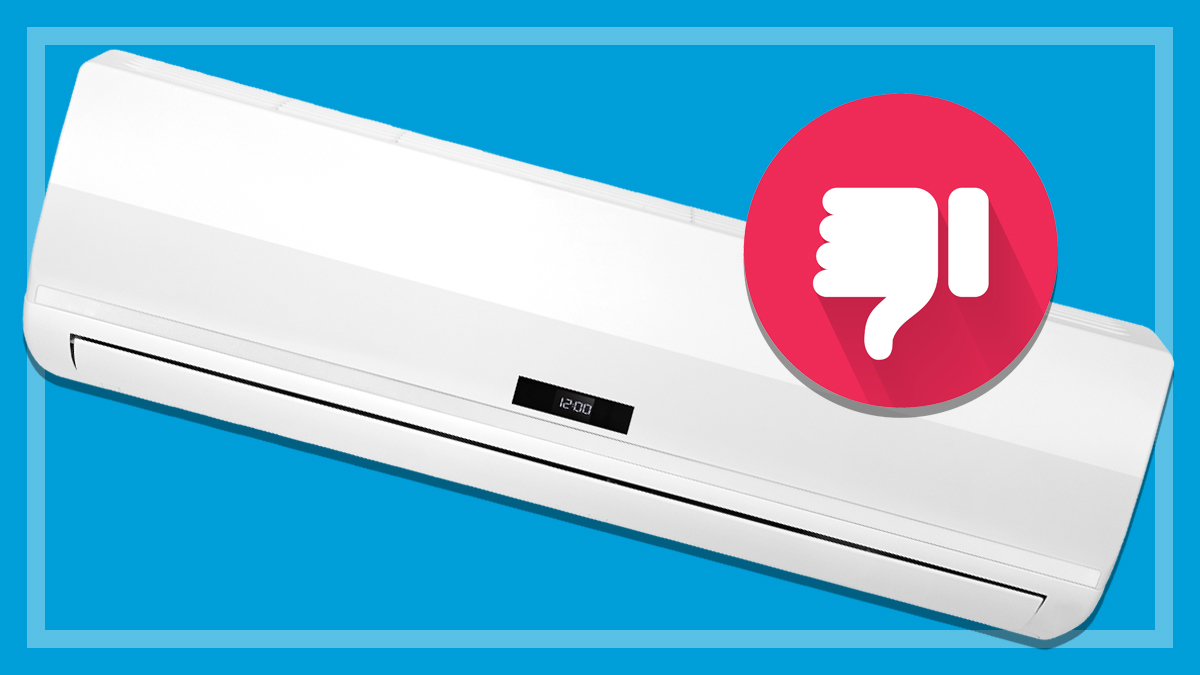Get our independent lab tests, expert reviews and honest advice.
Clothes washing symbols explained

Cotton, silk, linen, wool, rayon, lycra – our clothes are made from a huge number of different materials, and just as they have different properties, so too do they have different requirements in the wash.
On this page:
- Do you have to follow laundry care symbols exactly?
- Bleaching symbols
- Dry cleaning symbols
- Air drying symbols
- Handwashing symbol
- Ironing symbols
- Synthetics and cottons symbols
- Washing temperature symbols
- Clothes dryer drying symbols
- Wringing symbols
But how do you know what you need to do to take the best care of your new shirt or slacks? The care instructions written on the garment tags will tell you, you just have to learn how to read them.
When it comes to caring for your clothes, symbols developed by the International Organization for Standardization (ISO) were used rather than words to convey information irrespective of language.
While it seems daunting – there’s over 50 of them after all – it’s actually not, because the symbols are all based on a handful of basic shapes relating to a different aspect of garment care – bleaching (a triangle), washing (a tub with water), drying (a square), wringing (a twisted garment), dry cleaning (a circle) and ironing (an iron, unsurprisingly).
Each symbol then has modifiers denoting a specific meaning, but the most common – an X or cross – has an almost universal meaning: don’t do it.
Do you have to follow laundry care symbols exactly?
Cleaning your clothes correctly is key to keeping them fresh and looking their best for a long time – getting it wrong in the laundry means they won’t go the distance, and you could even destroy them completely in one wash.
Most clothing manufacturers recommend the most conservative cleaning methods to minimise the risk of damage to your clothes – for instance, a fabric labelled as ‘dry clean only’ may be perfectly safe for hand washing, so you probably don’t need to follow care instructions religiously.
But you also shouldn’t ignore them entirely – there’s a risk of fading, shrinking or otherwise damaging clothes if you mistreat them in the wash, especially when it comes to bleaching or tumble drying. Paying attention to the material your garment is made of will help you make an informed decision about how much (or little) leeway you have.
So let’s get down to it. Here’s what the different washing symbols on your clothes mean.

Bleaching symbols
- A triangle symbol relates to bleach.
- A clear triangle means that any type of bleach can be used on the fabric.
- A triangle with two slanted lines means use a non-chlorine or oxygen-based bleach. Alternatively, the label may state “No Chlorine Bleach”.
- An X over a solid colour triangle means Do Not Bleach.
Not all garments will carry a bleach symbol, but that doesn’t mean open season, and you should never use bleach on wool, silk, or leather garments.

Dry cleaning symbols
A circle symbol relates to dry cleaning.
Some clothes won’t fare well under the rigours of your washing machine and can only be dry cleaned. And while we said you can take some of these care instructions with a grain of salt, you should generally adhere to the dry clean only instruction. Some dry cleaning symbols are also for the benefit of the dry cleaner, telling them which chemicals they should use.
- A circle means the item can be dry cleaned.
- Letters inside the circle (e.g. A, P, F) tell the dry cleaner which chemical and method to use.
- An X or cross over the circle indicates the garment should not be dry cleaned.
- A diagonal line at the bottom left of the circle denotes short cycle.
- A diagonal line at the bottom right of the circle denotes low heat.

Air drying symbols
A square relates to line drying.
While line drying is generally much safer for your clothes than using a clothes dryer, there’s still a few things that you may need to be aware of lest you stretch, shrink or fade your favourite outfit.
- A drooping line inside the square means you can hang your clothes outside to dry.
- Three vertical lines inside the square means drip dry indoors on a clothes horse or rack.
- One horizontal line indicates you should lay the garment flat to keep its shape while it dries.

Handwashing symbol
The symbol for hand wash only is, unsurprisingly, a hand.
This indicates you should wash the garment item by hand at 40°C or lower. Alternatively, you can use your washing machine’s hand wash program if it has one – this is a gentle program suitable for delicate fabrics.
Wondering if your laundry detergent lives up to its cleaning claims? Our experts reveal the best and worst laundry detergents in our lab test.

Ironing symbols
A stylised iron in the square denotes, again unsurprisingly, ironing.
Remember, the X means don’t do it. An X through the steam coming from the bottom of the iron means don’t use steam.
The number of dots in the iron indicate what temperature you can iron the garment at. The more dots, the hotter the ironing temperature.
- One dot: low temperature (woollens, silk and other delicate fabrics).
- Two dots: medium temperature (synthetics).
- Three dots: high temperature (linen and cotton).
- No dots: iron at any temperature.
- An X or cross through the iron means the garment cannot be ironed.
- An iron with two or three lines at the bottom and an X or cross over it means dry iron only – no steam ironing.

Synthetics and cottons symbols
- A plain tub with water indicates wash, rinse and spin intensity. Garments carrying this symbol should not be wrung out by hand.
- A plain tub indicates the garment can be spun and rinsed as normal.
- A bar under the tub means use a low spin speed.
- Two bars under the tub means the garment needs a gentle wash action, but can be spun and rinsed normally.
- An X or cross through the tub means the garment should not be washed and may need dry cleaning instead.

Washing temperature symbols
- A symbol of a tub with a number or dots indicates maximum wash temperature.
- One dot denotes a cold wash.
- Two dots denotes a warm wash.
- Three dots indicates hot water.
- A tub with a number in it gives you more precise temperature guidance and can range from 30–95°C. Remember, that’s the maximum temperature – you can always wash in cold (or even just colder) water, and save on your energy bill.

Clothes dryer drying symbols
A square with a circle in it indicates clothes dryer drying.
This is important because incorrect dryer use is one of the most common ways to damage your clothes, and over using your clothes dryer can rack up huge energy bills.
The dots indicate heat levels.
- One dot – use low heat.
- Two dots – use medium heat.
- Three dots – use high heat.
- An X or cross over the symbol means the garment is not suitable for the clothes dryer.
- Ever ruined a beloved garment in the dryer? Read about our 10 common dryer mistakes (and how you can avoid them).

Wringing symbols
A twisted knot indicates hand wringing.
Wringing out your clothes can help get the water out, but it has the potential to seriously damage the fibres in the fabric, so don’t ignore the no wringing symbol.
- A twisted knot symbol means the garment can be wrung out without damage.
- An X or cross over the symbol means the garment is not suitable to be wrung out.






